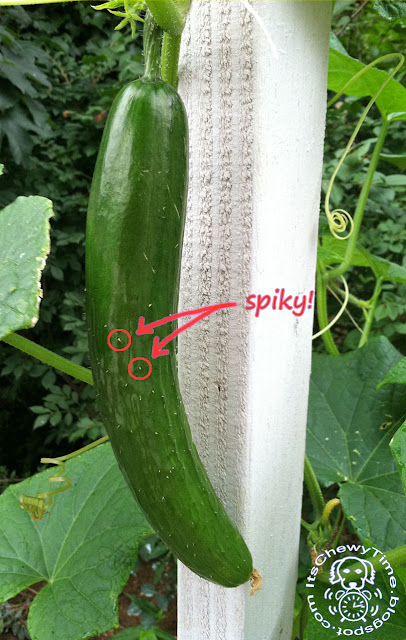 |
| Mischief in the garden, courtesy of Chewy |
Intermediate vegetables to grow for dogs
1. Broccoli
Broccoli is a cool weather crop, so it grows better in the spring and fall. Some varieties are heat tolerant, but still need time to get established before the harsh summer heat arrives. Intense heat will cause the plants to flower and produce seeds, instead of the yummy florets that we eat.
Broccoli is a magnet for cabbage worms and aphids, which can greatly damage your crop if left unchecked, so be vigilant in searching for these pests and removing them.
Aside from these cautions, broccoli can be quite easy to grow. As a bonus, after you harvest the main head, side shoots of little florets will continue to grow.
As an extra bonus, at the end of the growing season, Chewy gets to shred the broccoli stalks for fun.
2. Kale
As a superfood, kale is jam-packed with nutrients and antioxidants. There are many varieties of kale, with different colors and leaf shapes. While relatively easy to grow, its flavor is best when grown as a fall crop and harvested after experiencing frost in late fall/early winter.
Kale, like broccoli, is part of the cabbage family, and is susceptible to the same pests.
3. Spinach
Spinach is another cool weather crop for spring and fall planting. It is quick to mature compared to many other leafy greens (~30-40 days).
4. Pole Beans
Pole beans are green/string bean plants that grow vines. Pole bean plants start producing beans later in the season than bush bean plants do, but are capable of producing a larger harvest over a longer period of time. As long as adequate support is provided for the vines to climb, more pole beans than bush beans can be planted in an area of the same square footage.
Support can be provided using trellises, teepees made from bamboo poles, or anything else that the vines can climb on.
5. Peas
Peas also require supports to grow well, and need more than just a pole to climb successfully: a grid-shaped support is best, such as a trellis, a panel of chicken wire or a network of twine. Peas grow best in spring and early summer, before it gets too hot.
I like to grow sugar snap peas because they are sweet and crunchy, but there are many other kinds, such as shelling peas and snow peas.
6. Cucumber
Cucumbers like warm weather, require pollination (from bees or other insects), and need fertile soil that is high in nitrogen. There are many varieties of cucumber, some of which are vining, and others that grow in low "bushes." Both types benefit from supports to keep the cucumbers lifted off the ground for straight growth and good air circulation to prevent disease.
Some varieties of cucumber grow prickly spines on the skin. They can easily be scraped off by running the blunt side of a knife along the skin. "Burpless" varieties tend not to have the spikes, but the leaves and vines of the plant itself are still prickly, so wear gloves!
Chewy likes munching on crunchy cucumbers. They have a high water content, which is perfect for a snack on a hot summer's day.
I, personally, do not like to eat a lot of veggies, but Chewy sure does!
Back to Part 1: Easy, Low-maintenance Vegetable Plants
Stay tuned for advanced vegetables...




Most dogs really like fruits and will gladly take when offered. We will describe some types of fruits dogs really like and whether they are safe for them or not.
ReplyDeleteClick here for more information can dogs eat blueberries